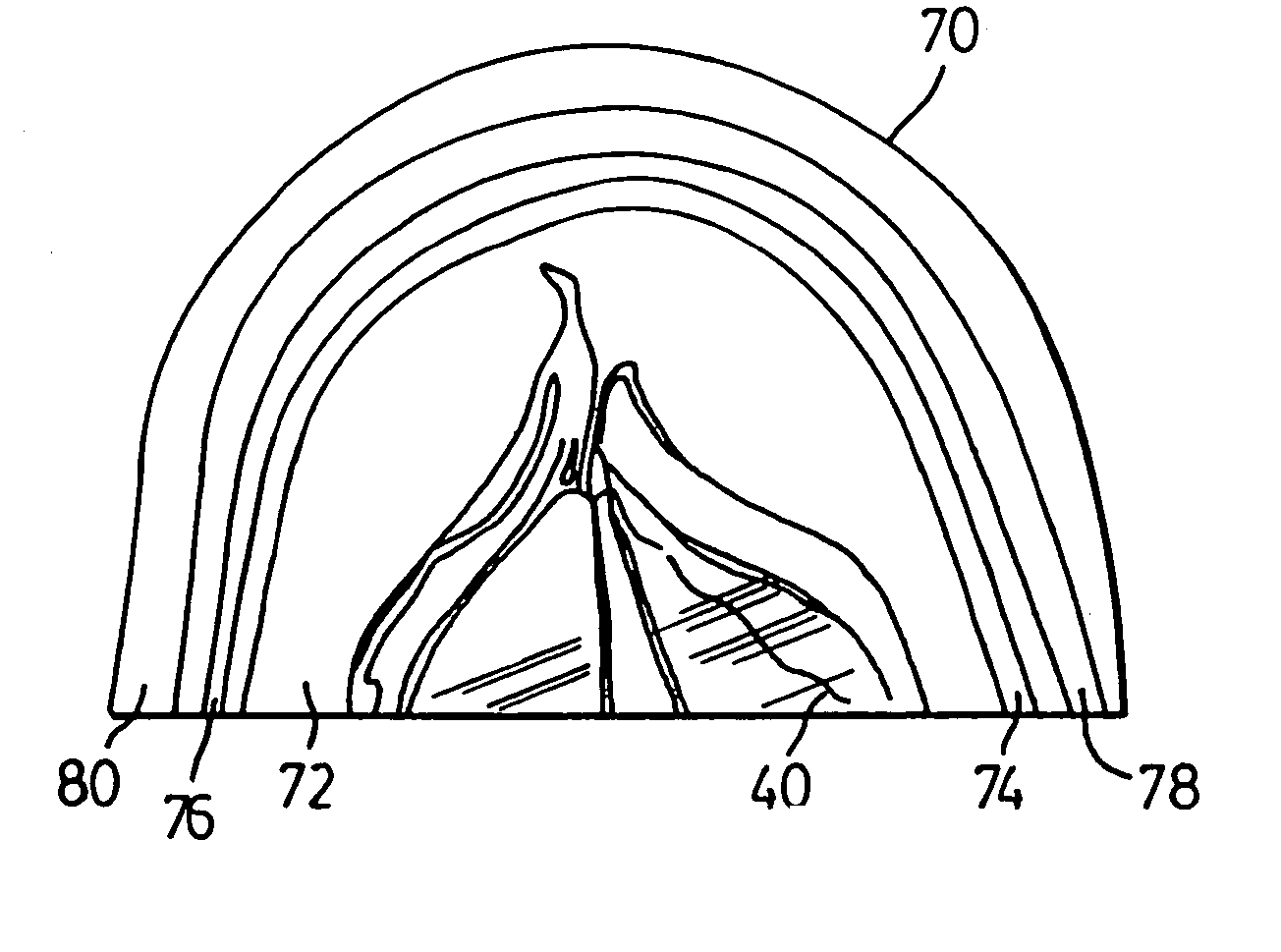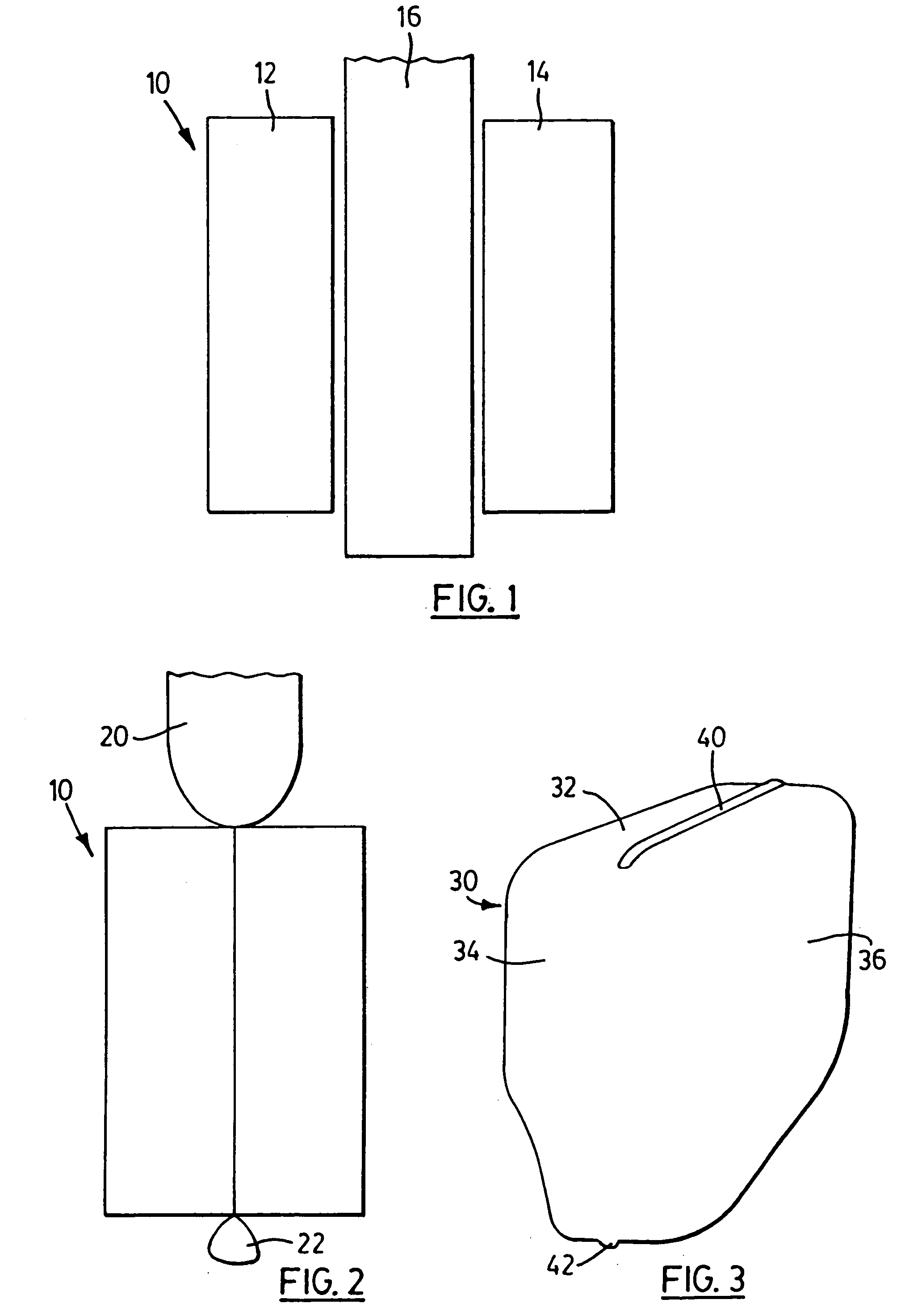Sealing bead
- Summary
- Abstract
- Description
- Claims
- Application Information
AI Technical Summary
Benefits of technology
Problems solved by technology
Method used
Image
Examples
Embodiment Construction
[0022]FIG. 1 illustrates the general arrangements of components in typical blow molding procedure. A blow mold 10 comprises complimentary mold portions 12 and 14. The mold portions 12 and 14 are movable horizontally, as shown in FIG. 1, from an open position to a closed position as shown in FIG. 2. When the mold portions 12 and 14 are in the open position, a parison 16 is extruded from an extrusion head (not shown). The parison will hang substantially vertically from the extrusion head. When the parison has been extruded and has the appropriate length, the mold portions 12 and 14 are closed. The closed configuration is illustrated in FIG. 2.
[0023]With reference to FIG. 2, it will be noted that there is a small portion of the parison indicated diagrammatically above the mold 10 as 20. There will also be a small amount of parison material extending beyond the mold indicated generally at 22. In order to achieve typical blow molding, the parison must form an air tight enclosure. Thus, t...
PUM
 Login to View More
Login to View More Abstract
Description
Claims
Application Information
 Login to View More
Login to View More - R&D
- Intellectual Property
- Life Sciences
- Materials
- Tech Scout
- Unparalleled Data Quality
- Higher Quality Content
- 60% Fewer Hallucinations
Browse by: Latest US Patents, China's latest patents, Technical Efficacy Thesaurus, Application Domain, Technology Topic, Popular Technical Reports.
© 2025 PatSnap. All rights reserved.Legal|Privacy policy|Modern Slavery Act Transparency Statement|Sitemap|About US| Contact US: help@patsnap.com



